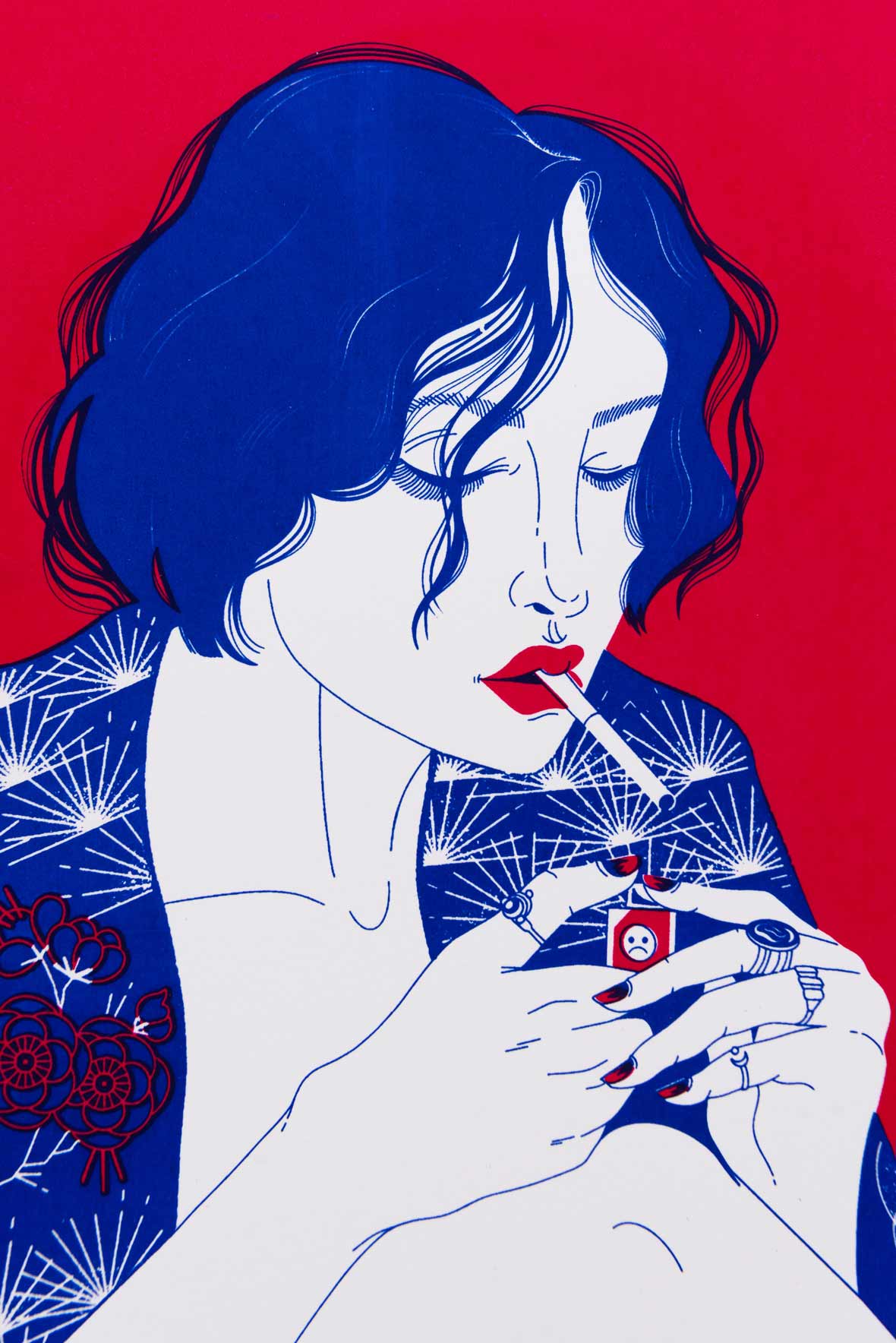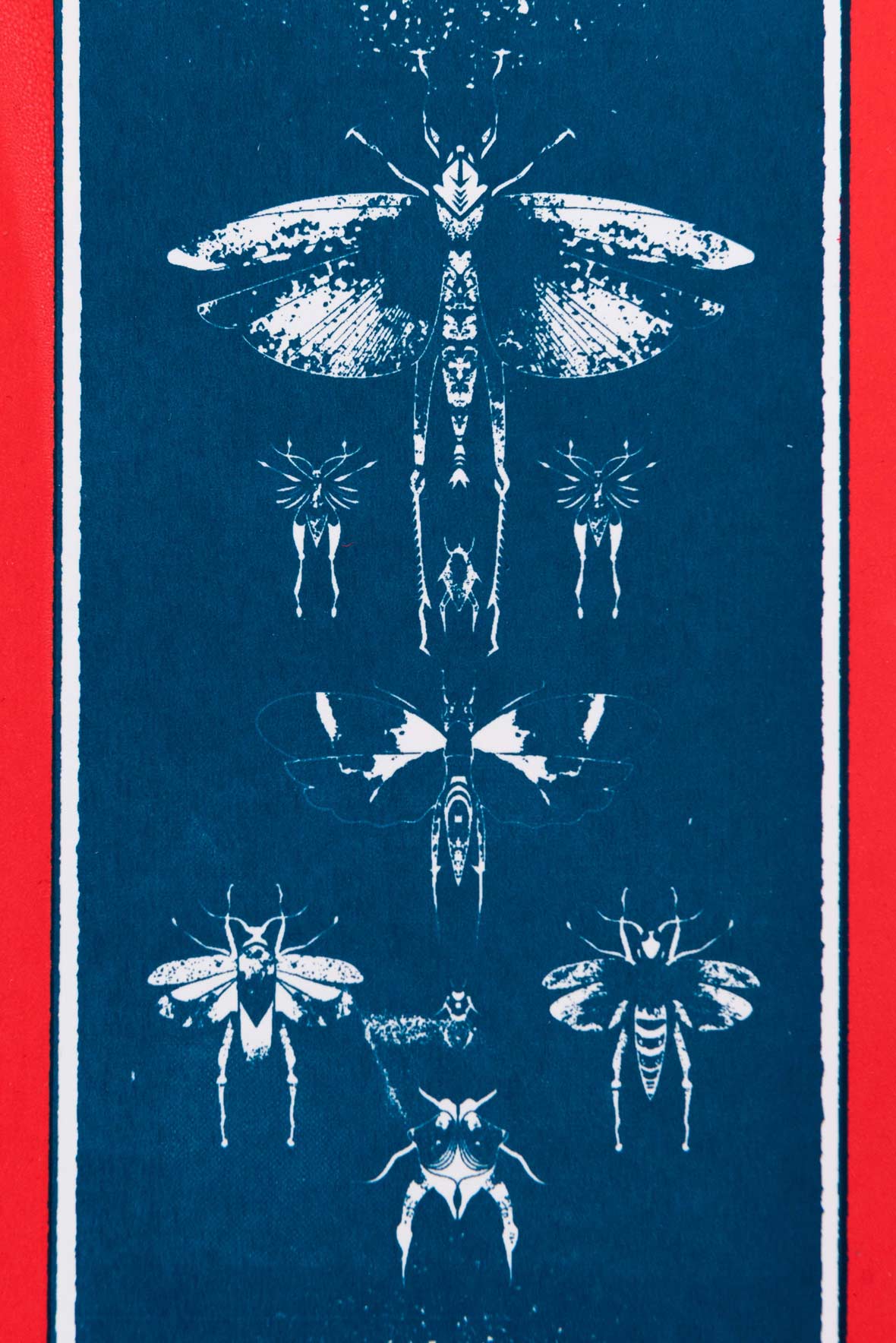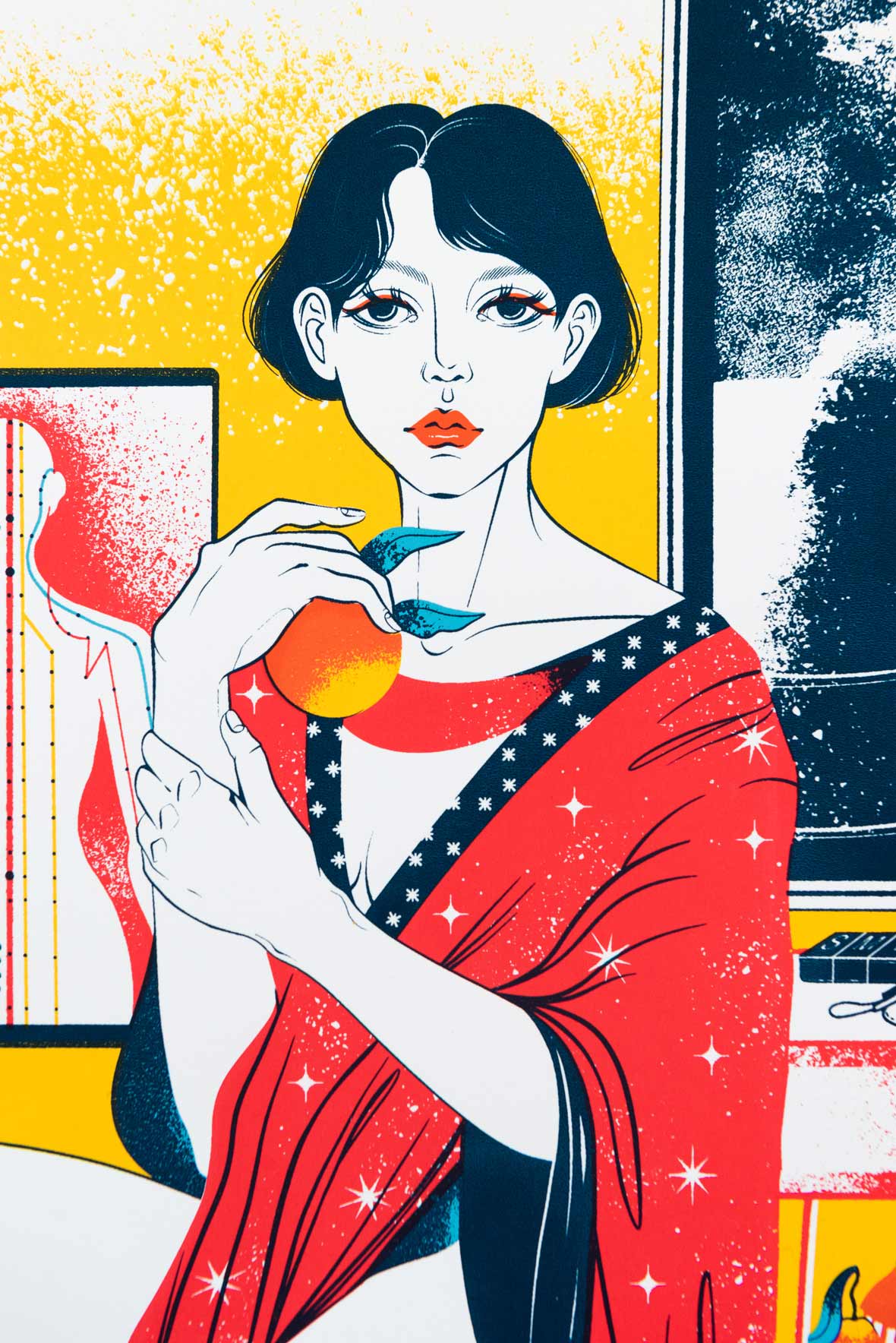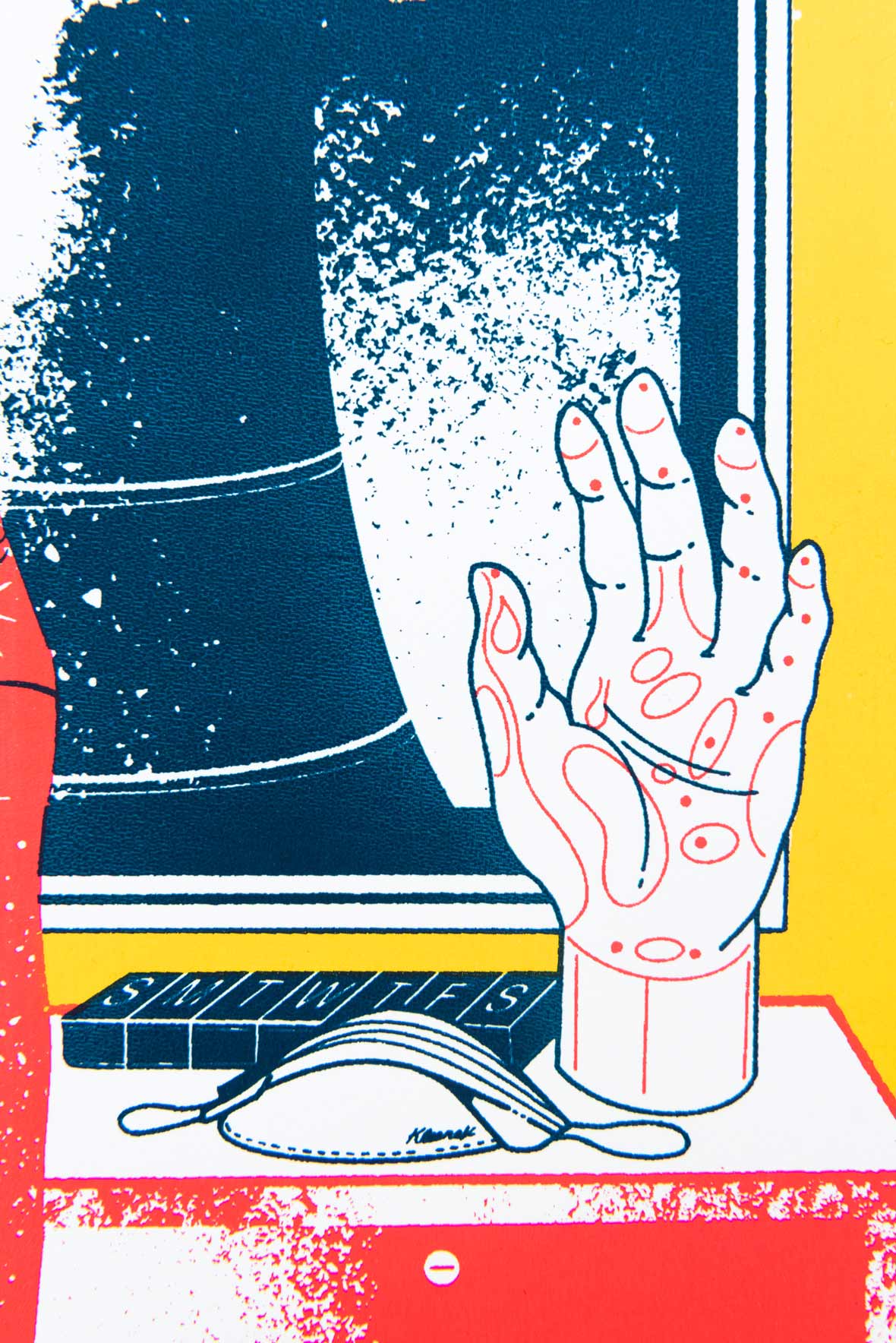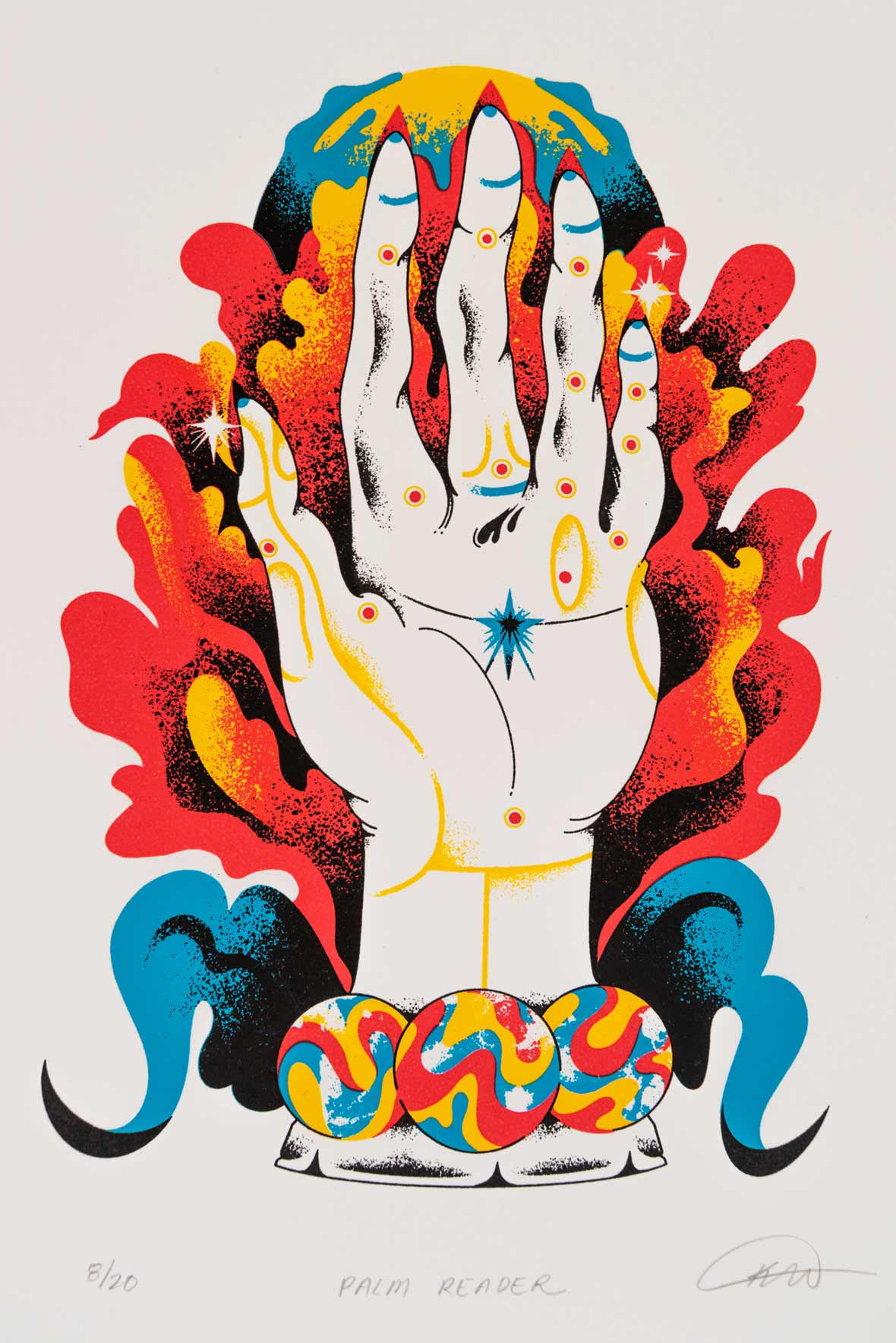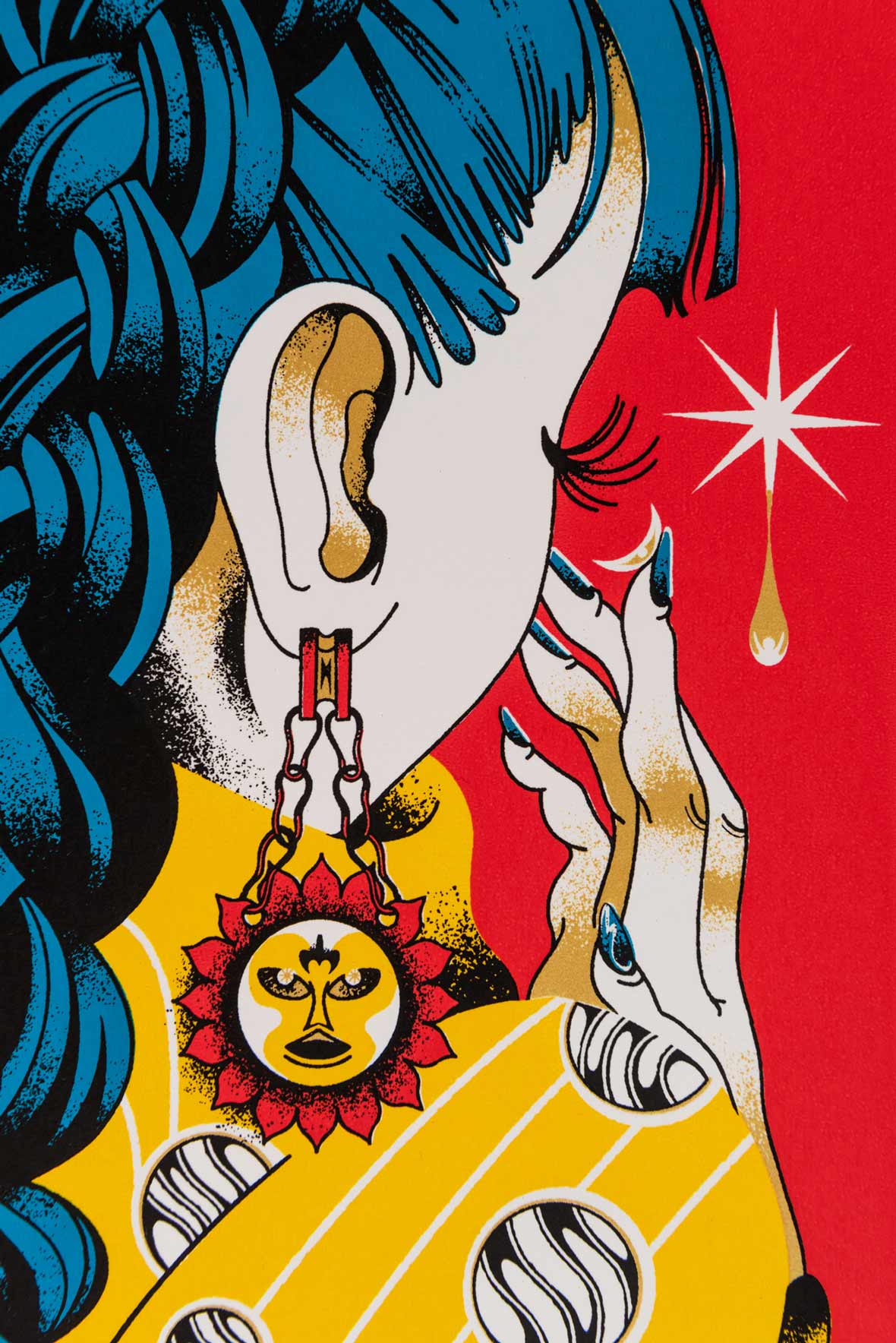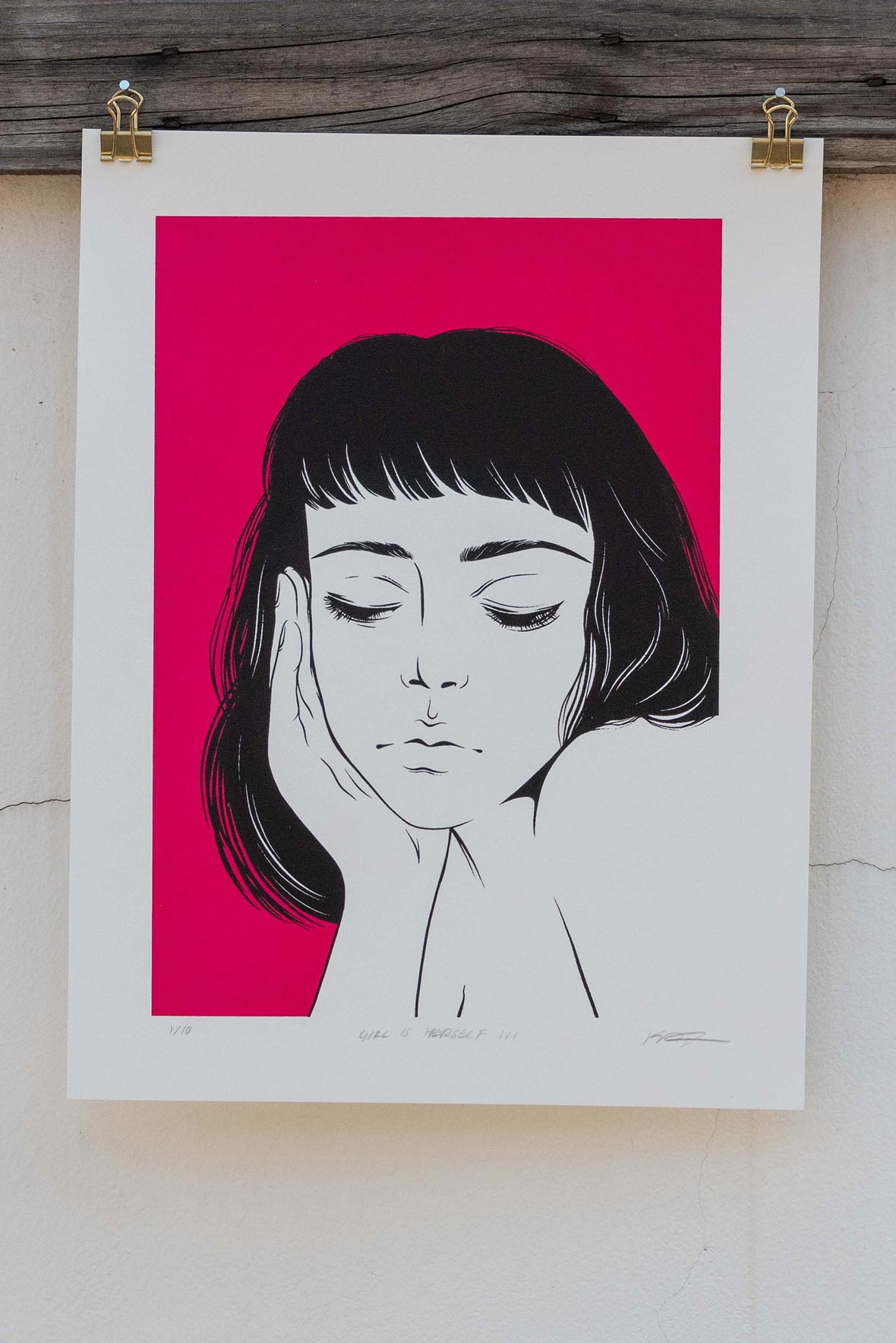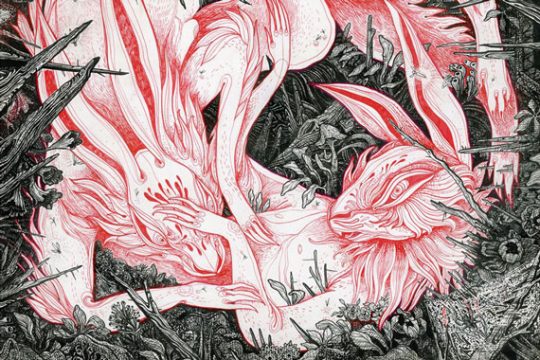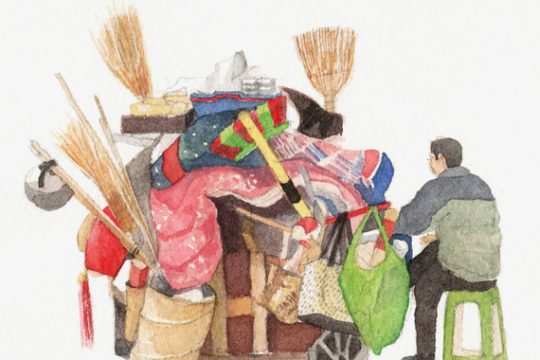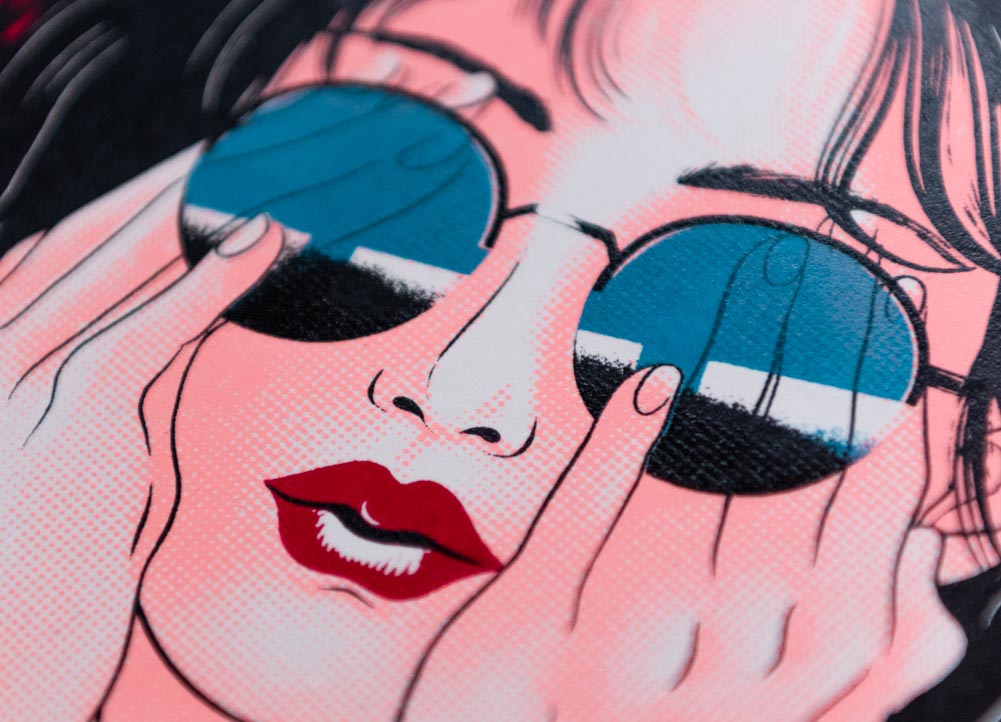
The women in Kelly Belter‘s prints sit alone, eyes closed or lost in the distance, with a look of apathy or boredom written across their faces. Or perhaps it’s not apathy or boredom, but something else entirely—expressions that aren’t so much enigmatic as they are ambiguous, unavailable. Drawn in simple lines and with a minimal palate, the subjects offer no insight into their thoughts. They’re not there to be looked at.
A Korean-American illustrator, Belter grew up in mainly in Dallas, and then moved to Korea to teach for a few years after college. That’s where she began to work seriously as an artist. Previously art had been only a hobby, and it wasn’t until she moved to Seoul, where she had plenty of time to spend drawing, that it started to seem like a realistic career choice. She enrolled in a graduate degree program and began freelancing seriously. “I invested more time in illustration,” she says. “I started picking up odd jobs and commissions while I was in school, upgraded my work materials, and transitioned into full-time work doing corporate design and freelance illustration projects after graduating.”
Kelly Belter 画中的女人们总是孤独地坐在一旁,她们双眼紧闭,又或迷失在远方,一副淡泊是非、百无聊赖的表情挂在脸上。即便并非如此,你也会从她们身上,稍许读出几分不食人间烟火的意味。Belter 用简单的线条和审美趣味,轻描淡绘出每一位女性主人翁的心头思绪。她们就伫立在那儿,不希望被他人察觉。
韩裔美国插画师 Belter 的青少年时光大部分在达拉斯度过。大学毕业后的几年里,她移居到韩国从事教学工作,并在那里开始作为一名艺术家进行创作。搬去首尔之后,Belter 拥有大量时间进行创作,艺术对她来说从兴趣爱好转变为职业选择。随后,她进行了硕士学位的学习,并开始着手于自由职业的工作,“上学的时候,我在插画方面投入了更多时间,用兼职的钱来升级我的创作用具。毕业后,公司的全职工作和兼职基本上是同时进行的”。
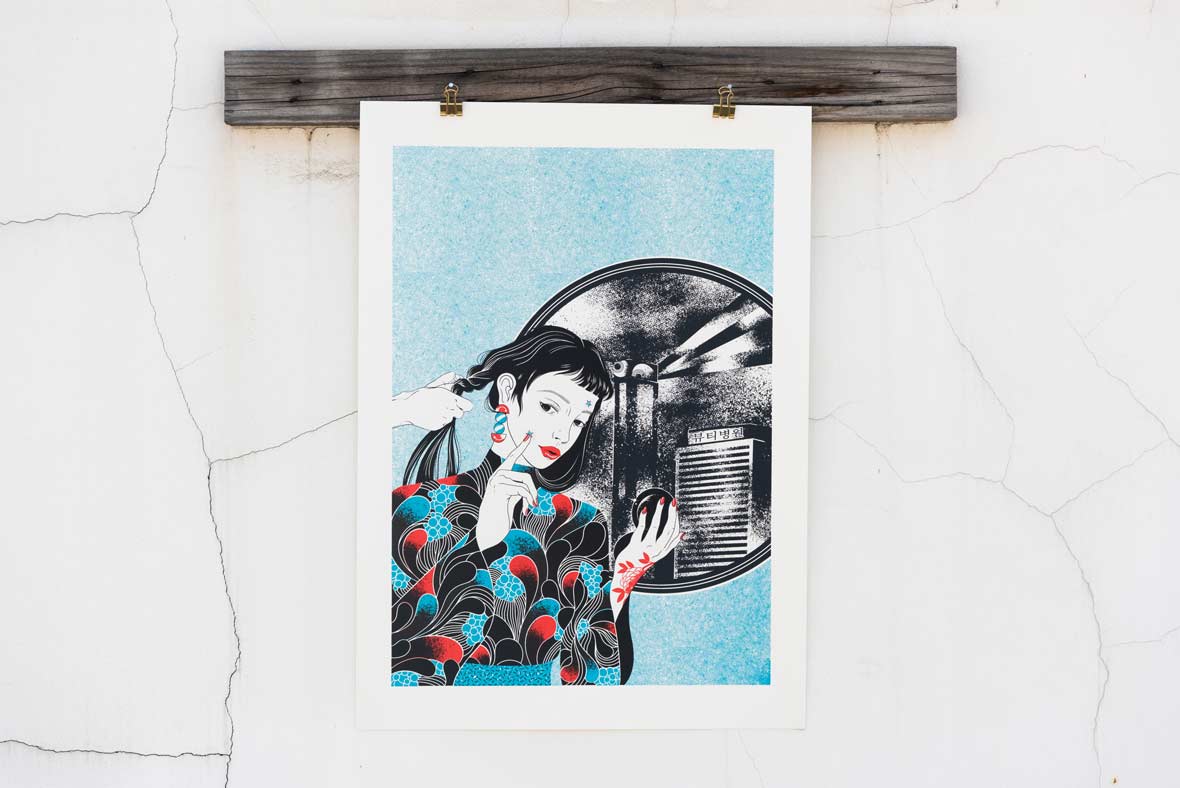
At first she created most of her work digitally, using illustration software. But eventually she grew tired of relying on a computer, and in 2018 she began experimenting with alternatives. That’s how she fell in love with print-making—particularly silkscreens and risographs. “The physical process of hand-crafting each image is really satisfying. I like the visual effect of bold, bright color blocking within an image,” she says. Printing by hand also also allows for slight variations of color and texture within each work. On her website, she sells risographs and limited edition prints.
Her figures have a static, wallpaper-like quality, an effect heightened by the floral patterns on her subjects’ clothes. “Creating a more ‘flat’ image allows me to better balance details, texture, and color palette,” she explains.
起初,Belter 用电脑插画软件绘制的大部分作品还有一股数字的味道,但后来,她渐渐对电脑的过度依赖感到厌倦,于是在 2018 年另辟蹊径,陷入了一场与孔版、丝网印刷的恋曲。她说:“亲手制作每张照片的过程让人心存满足,那些大胆以及色彩鲜明的视觉效果是我的心头好。”通过这种操作手感强烈的创作方式,你会在每一幅作品中,发现不同纹理与颜色之间细微的变化。在 Belter 的个人网站上,一些丝网印刷的限量作品正在公开售卖。
她的作品总有一种静态、墙纸一般的质感,女主人翁们身上穿着的花卉图案印映而出。“在平坦的纸质上作画,能让我更好地在细节、纹理和调色之间找到平衡”。
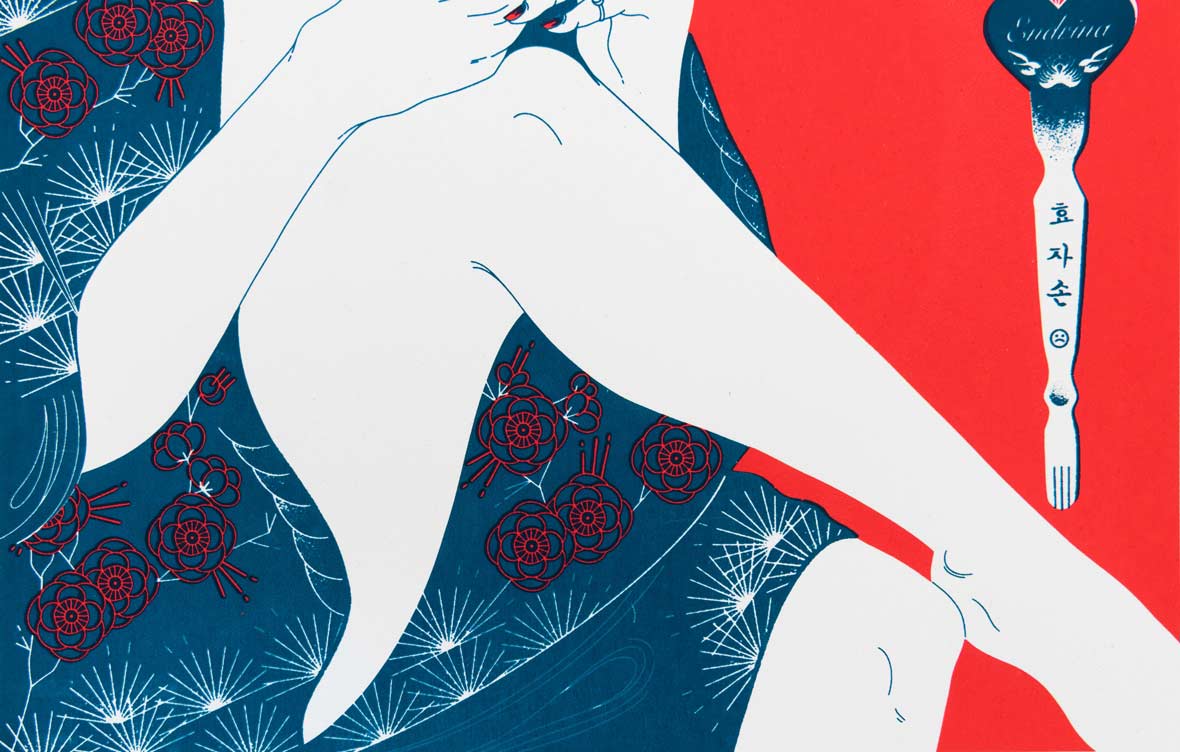
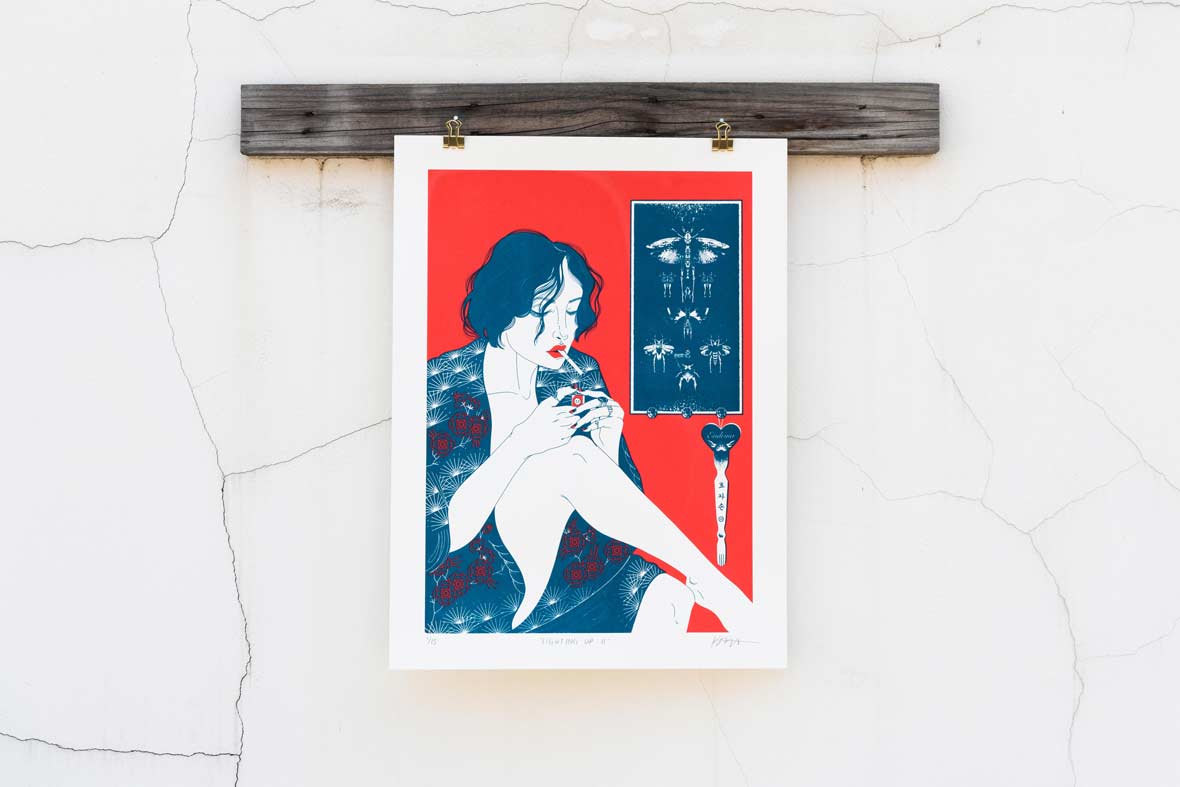
This flatness also makes the subjects more inaccessible to the viewer. Very subtly, Belter inverts a tradition of portraiture that leaves women on display as a passive object for an implicitly male spectator.
Belter has long been fascinated by nineteenth-century Orientalist art, and especially by the paintings of Jean-Auguste-Dominique Ingres (1780-1867), who often depicted non-European women in a romantic, exotic fashion. Belter’s work is in dialogue with Ingres, and she seeks to invert his representational conventions. “He often used the perspective of a window looking into a room of women,” she explains. “I hope to present women from a different perspective, and I’ve played with the idea by grounding the women within the room, often with a window behind them. The women I draw are self-concerned. They are looking at themselves, rather than being looked at by someone else.” While her subjects are seldom engaged in any action—they’re more likely to be gazing into space—they’re also not passively on display.
同时,平坦的纸质还会让人物看起来区别于凡尘,高贵且端详。细枝末梢处,Belter 颠覆了传统的肖像画法,以含蓄的男性视角展现女性外貌。
长期以来,Belter 一直沉迷于十九世纪东方主义(Orientalist)艺术,尤其是 Jean-Auguste-Dominique Ingres(1780-1867)的作品,这位法国画家曾时常描绘欧洲地区之外的女性肖像,具有丰富的浪漫色彩和异域风尚。而 Belter 的作品则像是与 Ingres 的对话,对话中 Belter 尝试颠覆后者的传统绘法。“Ingres 经常能以窗户的视角望去女性角色的闺房,而我则希望以不同的方法呈现,在我的作品中,窗子往往在女性的背后。我笔下的女性,都是关注自我的。她们与自己对话,并不希望被他人看到。” 同时,Belter 的人物通常没有任何动作,她们更像在空中凝视,并不想被展示在画卷里。
The eclectic objects in each print are also the product of considerable thought. Belter wants each image to suggest a brief, simple story, and she gets inspiration from photos she snaps of odd items that catch her eye when walking around Seoul. In “Oranges and Antibodies,” for example, a self-indulgent obsession with health is visible in the choice of props: “an acupuncture hand sculpture and diagram seen in a traditional medical office, pill boxes, Korean Hallabong oranges and the filter-masks everyone in Seoul wears. I wanted to contrast that self-concern and decadence with the environmental chaos outside and our propensity to ignore it.”
画中的物品也同样是经过 Belter 深思熟虑的,她希望通过画面去呈现言简意赅的故事。每当漫步在首尔街头,她都会用相机记录下那些夺人眼球的物件。在作品《橘子和抗体(Oranges and Antibodies)》中,过度迷恋健康的心理状态被安放在了可见的道具上面,“你会看到人体和手部穴位模具,药箱以及韩国人人都有的过滤面罩。我想用这些道具延伸出一些思考 —— 自我意识、外界环境的混乱、以及人们司空见惯的态度,让这三者之间形成反差的对立面”。
With her newfound love of printmaking, Belter is eager to continue experimenting with new techniques and media. She’s now at work on a screen-printed zine, which she also plans to release as a risograph. And at least one of her prints is also available in tote bag form.
If you can’t catch her at one of the art book festivals she’s been attending across Korea and throughout Asia, you can find her prints available on her website.
在她与版画制作的恋曲中,Belter 也希望持续在作品中加入新的技术与媒介。目前,她正忙着一本丝网印刷杂志的制作,孔版印刷的打印版本也在计划之中。同时,一些作品还会被印在托特包上面。如果你没能参加她在韩国和其他亚洲地区的艺术书展,你还可以在 Kelly Belter 的网站上浏览她的作品。
Like our stories? Follow us on Facebook and Instagram.
Website: kelbelter.com
Instagram: @bybelter
Contributor: Allen Young
Chinese Translation: Pete Zhang



